This is my second kimono ever! A kuro-tomesode was an odd choice, seeing as how they’re only proper for older, married women going to a very formal event, and I was in my early twenties when I bought this, and never go anywhere fancier than the movies. I was not going out of my way to get one, but when I saw this one, I fell in love. I’m fairly certain it’s a rental, due to the fairly generic kamon, the synthetic lining, and the fact that there is a huge black reference number written on the lining in black marker. XD
The design is also very typically bridal, cranes are a standard motif for wedding items, and the pines are an auspicious design. That all being said, I don’t care! I love it! I tried to tone down the wedding-y feel in this outfit by using a coloured obi and lavender accessories, rather than a gold obi with white accessories.
And behold, the huge orange menace in my life officially known as Vinnie
Items used in this coordination
- Crane and Pine Kurotomesode
- Orange and Gold
- Lavender Chirimen
- Lilac with Olive
- Orange Brocade Zori

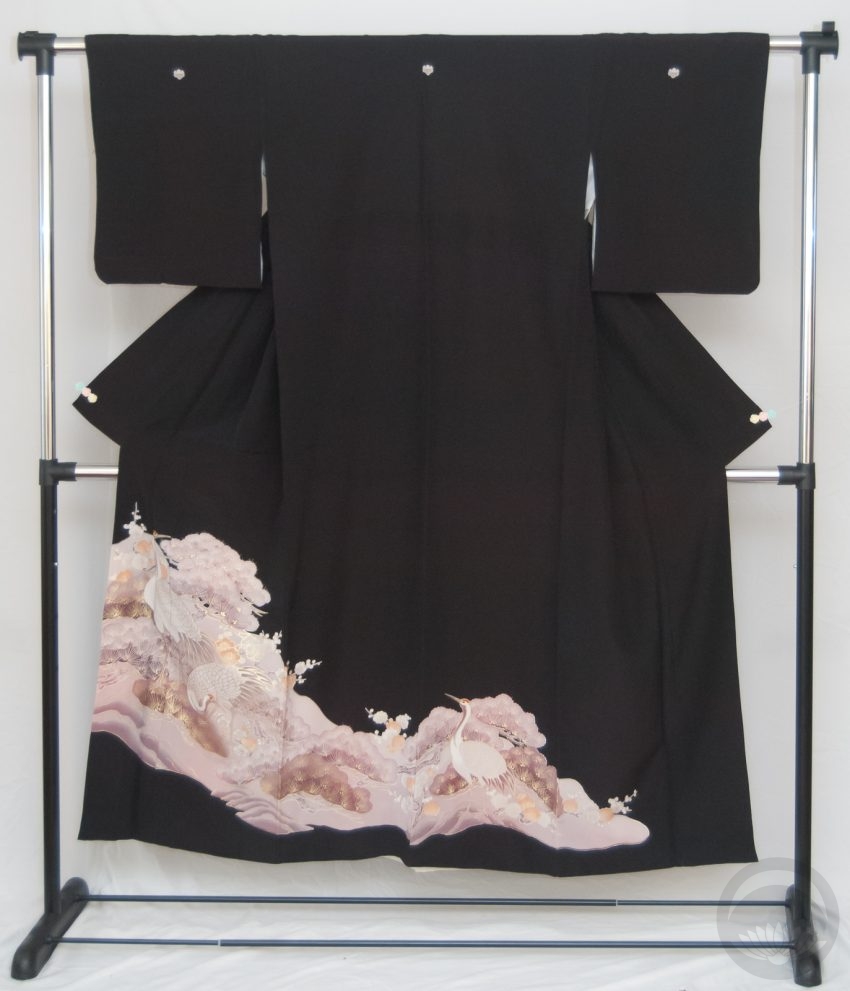
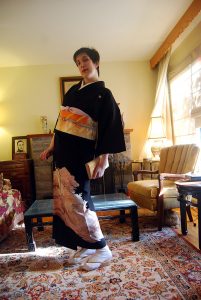
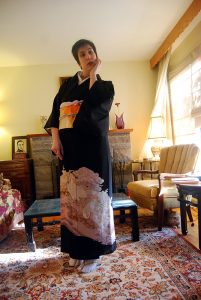
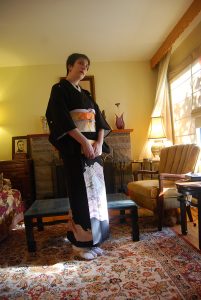
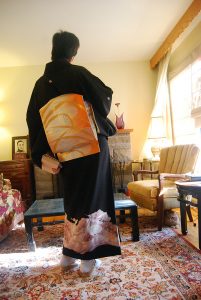
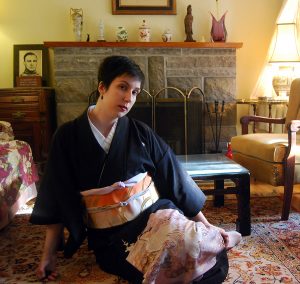
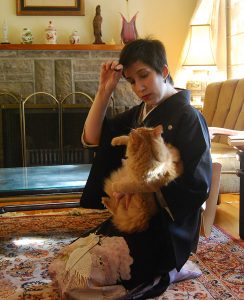
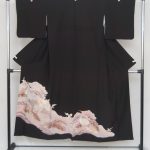

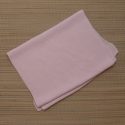
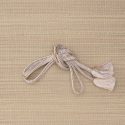












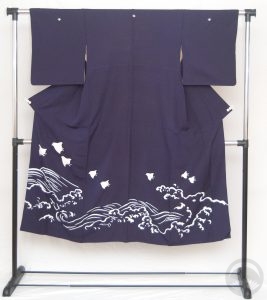


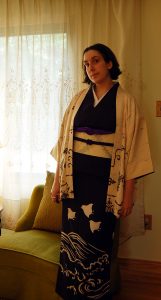
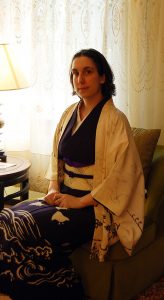


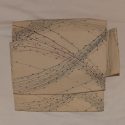
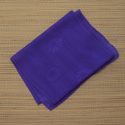


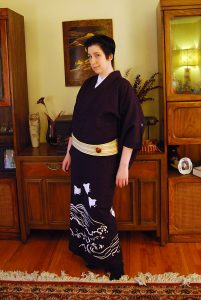
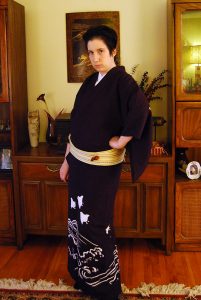
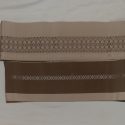






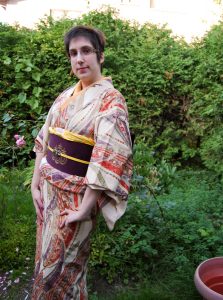
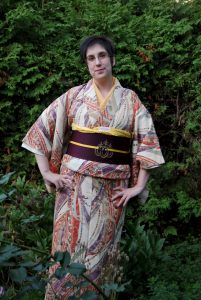
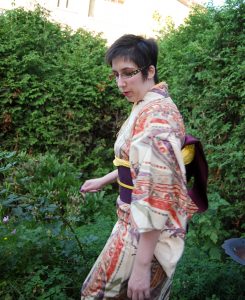
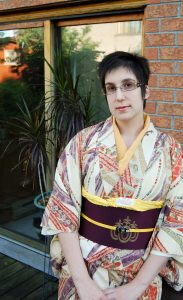

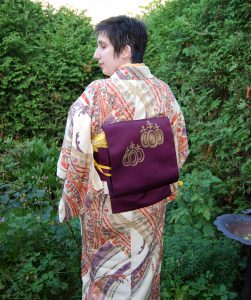
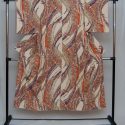
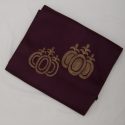

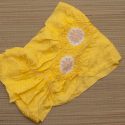
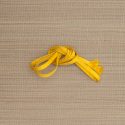
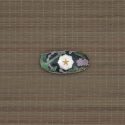











 Bebe Taian
Bebe Taian CHOKO Blog
CHOKO Blog Gion Kobu
Gion Kobu